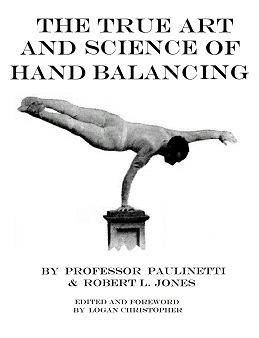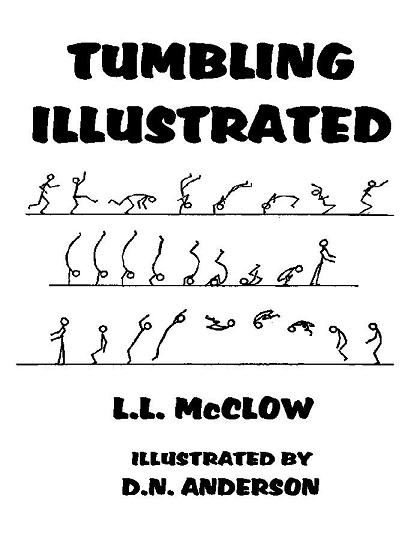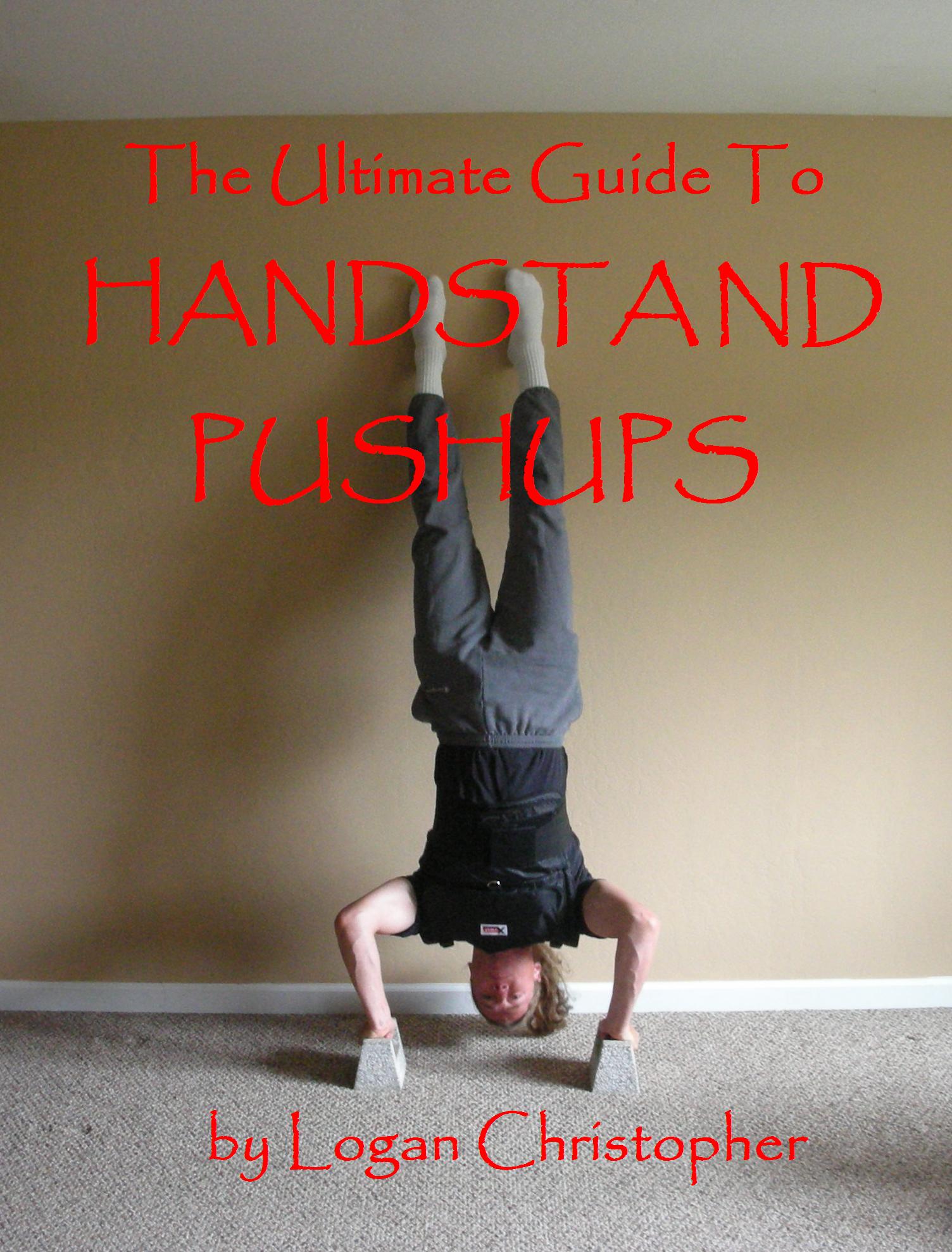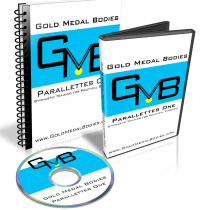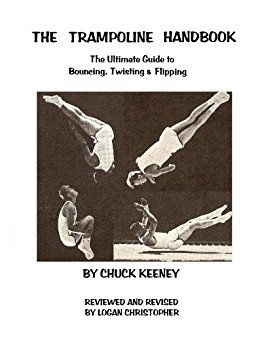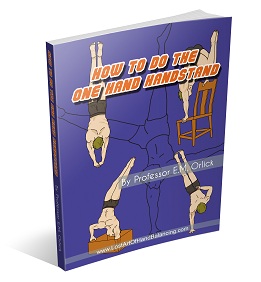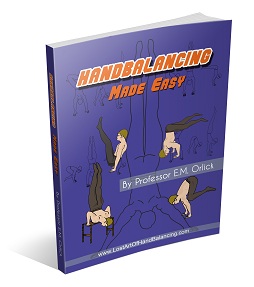Just a quick post to let you know an order of the Hand Balancing Stands is being produced and they are back in stock. They’ll be ready to ship out by the end of next week.
About admin
Author Archive | admin
Intro to Capoeira
I was at a competition this past weekend and met Adrian who had previous years of experience in Capoeira. I asked him to demonstrate just a few basic moves and he obliged. Enjoy!
There are many different arts that incorporate hand balancing and acrobatics into them and each one is unique. If you’d like to see more about Capoeira here on this site leave a comment below.
Parallette Training without Parallettes?
In the past three posts you’ve got tons of ideas on training you can do with parallettes. But what if you don’t have a pair of parallettes to train with?
One, you can easily make your own pair for cheap.
Two, you can replicate the same training with a variety of other objects. This video gives you more details. Not exactly the same but close enough to gain 95% of the benefits.
There are just a few days left to save 15% on Gold Medal Bodies awesome parallette training course. Just go check out P1 here and use the coupon code ‘LEGENDARY’ before March 31st.
Combining Parallette Presses and Holds to Build Strength and Skill
Ryan Hurst from Gold Medal Bodies is here to show you how to move forward with your parallette training. Click here for Part 1 and Part 2. This is the third in a three part series.
By now, you should have developed some foundation strength in the basic parallette press and L-sit. That’s a great start, but we started off this series talking about advanced exercises like planches, and maybe it still seems like we’re a long way off from there.
Though it’s true we’re still not ready for advanced work, we can prepare for it by taking these basic skills and combining them into a combination routine.
Anyone following Logan is not going to be a stranger to the concept of sophisticated skills such as handstands and bridging. You’ve also been exposes to the idea of building from simple variations to more difficult ones. One way we like to achieve this is by building combinations – what we like to call “flows” – that put the basic movements together in more interesting and challenging ways.
Today’s video covers a simple flow exercise you can do on the parallettes.
As you can see, we’ve added one more basic exercise, then put them together into a simple combination.
The routine goes like this:
1. Pushup
2. Swing forward to L-sit
3. Swing back to inverted press
4. Repeat
Perform this for 3 to 5 sets of 3 to 5 repetitions. Do this 3 days in a row, rest one day, then test your strength the next day to check your progress. We’ve included a sample two week program using this routine that will get you ready to begin serious parallette training – the kind that moves you toward advanced skills.
Download link for sample program
Of course, there’s much more to using parallettes than this. The possibilities are really almost endless, but you’ll need some basic strength and control before you can pull off the fancy stuff.
The program above is a starting point. Once you’ve given that a shot, we encourage you to check out our Parallettes One course, which takes these basics to the next level, building pressing strength and skill that will serve you well for any goal.
Gold Medal Bodies has a full blown course on Parallette Training. Until the end of March you can save 15% off the price of any P1 bundle by using the coupon code ‘LEGENDARY’.
Holding the Center: Introducing Parallette Holds for Core Strength
Ryan Hurst from Gold Medal Bodies is here to show you how to build a training foundation with parallettes. This is the second in a three part series.
If you’ve been practicing your parallette push-ups, you’ve probably noticed that your arms and core feel a little different from what you’re used to. Maybe after a couple of days, you started to get the hang of it, and as your technique improved, you were able to perform the presses more easily.
That’s great, because it means that you’re ready for the next challenge: the most deceptively simple “abdominal” exercise of all time (that actually works way more than just your abs).
Enter the L-Sit
The L-Sit is a fundamental “hold” exercise that exemplifies the whole body tension generated by proper parallette training. Check out this video for a complete beginner’s tutorial on parallette L-sits:
The key point, as in the pushup, is the focus on bringing your elbow pits forward. This allows you to lift your chest up fully and pack down your shoulders. In this position you can bring your hips forward and lift your legs higher, which you’ll find makes the exercise much, much harder.
Strong core activation is initiated with an emphasized full exhale and lock out of the knees into the full L-sit position. If that’s too challenging to start with, you can begin by training the basic tuck position to achieve better form and technique. Try to keep your hips between your hands, or even further forward.
When you can hold the tuck for five reps at five seconds each, you’re ready to move on to the full L-sit.
To make the transition from tuck to L-sit, extend your legs out to a full locked position, fold back into the tuck and relax down. Instead of extending the feel, think of flattening the knees.
While holding the tuck for up to five seconds, extend into the L-sit for one second and return the the tuck. Repeat and gradually lengthen the time with your legs straight. Eventually, you want to work for 5 reps of 5 second holds.
Don’t get discouraged – the L-sit is tough!
You can practice this every day, but don’t neglect your recovery. Keep the volume low and remember to focus on technique above all else.
Once you’ve got a strong L-sit, you’ll have the core strength necessary to begin moving around on the parallettes. That’s what’s coming up in the next installment – so practice this technique and let us know if you have any questions.
Gold Medal Bodies has a full blown course on Parallette Training.
Parallette Training Foundation for Full-Body Power
Ryan Hurst from Gold Medal Bodies is here to show you how to build a training foundation with parallettes. This is the first of a three part series.
If you’ve ever seen a gymnast perform skills like the planche, you’ve probably wished you could too. Maybe you even got right down on the floor and tried one. Then looked around to make sure nobody was watching after you landed on your face.
Most of the classic bodyweight feats of strength are really damn hard (that’s why they’re called “feats of strength”), but with the right foundation, there’s no reason they can’t be achievable. But how do you build that foundation? Surely, if it were as simple as doing more bench presses, you’d see a lot more people who could perform a planche.
There’s a right tool for every job, and the tool gymnasts use to build upper-body strength for floor work is a set of parallettes.
Parallettes are great for a number of reasons. Not only do they allow greater stability and leverage than our hands have on the floor (which makes it easier to practice many skills), they’re small, light, and easy to build for yourself.
Everyone knows that pushing exercises are key for practical upper body strength, but what you may not know is how basic pressing can lay the foundation for more sophisticated, full-body movements, and parallettes are an ideal tool to help bridge that gap.
In recent years, parallettes have been adopted primarily by CrossFitters, owing primarily to their portability and cost. Unfortunately, the information on the web about parallette training is limited and simplistic. A quick check on YouTube shows tons of videos of people performing maybe three or four different parallette exercises, usually with poor form.
So let’s start there – by learning one high-leverage exercise with perfect form.
Enter The Parallette Push-Up
“Just a push-up?”
When you focus on your form and pay attention to finer details of the movement, you’ll find that doing correct push-ups on parallettes can be much more challenging than you’d expect.
As a reminder:
• Keep your elbows tight in to your side, with hands slightly wider than shoulder width. Shoulders stay over your hands and don’t let them drop below the level of the bar on the bottom of the repetition.
• Push and drive your elbow pits facing forward.
• A three second hold on the bottom and top position, with a locked down core, tight butt and legs will create a whole body tension, and make this into a full body exercise.
This exercise can be performed daily if repetitions are kept low (not more than 5 repetitions in a set).
We’ll have another video in a couple of days that builds on this foundation and really tightens up your core strength for more dynamic movements.
Until then, give these a shot and be sure to leave a comment and let us know how you like ‘em. Do you still think they’re “just push-ups?”
Gold Medal Bodies has a full blown course on Parallette Training.
On Parallettes
Back at the end of January I had the pleasure of meeting up with some new friends at a seminar they were hosting.
It was some top quality gymnastic strength type training information suitable for all levels.
It was a lot of fun and some of the exercises and drills were new to me. That’s saying something because I have a bit of experience in this field.
The best part though has to be the progressions. As you know training with balancing and bodyweight exercises it isn’t always easy to make the jump from one skill to the next. Progressions are the key that makes it work.
I’ve convinced them to give you some info to get started regarding training with parallettes.
In case you don’t know parallettes are mini parallel bars. The sizes can differ but they allow for some fun and unique training as you‘ll come to see.
Any pushup bar or similar setup can be used.
In fact in my book The Ultimate Guide to Handstand Pushups I show you how to make them. But I’m not going to make you buy the book to get started.
Over at my friend Mike’s site he has a good tutorial on how to put a set of parallettes together for cheap.
And tomorrow Ryan Hurst will show you how to use them. Stay tuned.
Good Luck and Good Hand Balancing,
Logan Christopher
Frogstand Tips Video
This video shows a tip for the Frogstand I came up with after working with a client on his handstand. Give it a try and see if it helps you out.
By placing your hands wider than shoulder width you can more easily support your body weight thus making the frogstand easier to hold.
On the flip side, if you wish to make it more difficult bring your arms in closer and/or straighten the arms in the frogstand position. This can add in moving forward with tuck planche work.
Want to get more tips like this that help you better to hold a handstand? Check out the new Secrets of the Handstand Quick Start DVD 2.0.
There are just a few copies left with the special deal for the new Advanced Bodyweight Training.
Get In While You Can
I was working with a client again today and came up with something that can help you big in the frog stand, and thus work your way to the handstand.
I’ll shoot a video of it soon and put it online for you to see. (Should have had the camera rolling right then…oh well, maybe next time.)
That brings me to the new Secrets of the Handstand 2.0 DVD.
Thanks to everyone that picked it up over the past week.
There is still time to get in on it. After all, it’s free. All I ask is your help in shipping and handling.
And you get to try out the new Advanced Bodyweight Training Monthly along with it too.
I’ll let you in on a little secret…
Starting now and over the next couple months I’m giving all the members what’s going to become my bodyweight strength training course.
And they’re getting it for a fraction of the price I’ll be selling it at later by getting in now.
People have been asking me about this course for years. I’ve finally just put it together so that anyone can become ridiculously strong with just four exercises (including the variations and progressions found inside).
Some of this material I have never seen covered anywhere else.
So when you sign up today you get an 80 minute DVD that shows you how to master the handstand. You’ll also get the first Advanced Bodyweight DVD covering one of the major exercises, that builds strength applicable to all hand balancing and acrobatic skills.
And over the next two months you’ll get the other four DVD’s to complete the course.
23 of 50 spots have already been filled. After this week is over this month’s DVD goes into the archives until the BIG course comes out.
Good Luck and Good Hand Balancing,
Logan Christopher
P.S. Sorry if you think I’m coming of a little pushy, but this is a insane deal and I highly suggest you check it out while I have it available.
Struggling with the Handstand?
The vast majority of people that come to this site are beginners looking to get into a handstand for the first time.
Yes, there are those that can effortlessly hold a one arm handstand but they are few and far between. And everyone else is jealous of them of course. 😉
I was working with a client named Tom yesterday who has a goal of doing a freestanding handstand.
I told him that when I started doing handstands I made every single mistake you could. Only through my persistence was I finally successful.
But for Tom and you, it doesn’t have to be that way.
I told him all about the lead-up stunts and how these allow you to build the skills necessary to do a handstand but do it in an easier method then the handstand itself.
Can’t hold a stable headstand? You shouldn’t be working on the handstand. (I made that mistake.)
Can’t kickup very well? You should practice that instead of just the handstand. (You guessed it, another mistake of mine.)
Barely can hold a handstand against the wall for ten seconds? You should improve your position and endurance before going freestanding. (Okay, here’s one I wasn’t so bad in.)
As you may know I just completely re-did my Secrets of the Handstand Quick Start DVD. This is 2.0. While I had upgraded it in the past this time it was redone from the ground up.
It totals 80 minutes long as there was so much information to cram on there that will get you into a handstand faster then anything else.
I’m testing something on a new site. But since you’re already a loyal subscriber you won’t need to subscribe again.
https://www.handstandmastery.com/yourvideo/
If you’ve been around awhile you may already have these gifts. If not, grab them know.
There’s a video that gives you more details on the lead-up stunts.
There’s a special report that details 10 mistakes people make when doing the handstand.
And lastly a mp3 of a special call I did with Jim Bathurst from Beast Skills that goes over all manner of hand balancing skills.
Then and only then if you want you can take me up on my ridiculously generous offer on the new Secrets of the Handstand 2.0
I’ll leave you to see why its’ so great by going to the next page.
https://www.handstandmastery.com/yourvideo/
Good Luck and Good Hand Balancing,
Logan Christopher
P.S. If you’re still struggling with the freestanding handstand run over to this page right now and see what I’ve got for you.
https://www.handstandmastery.com/yourvideo/
P.S.S. Even if you can easily do a handstand you may still want to check this out…

